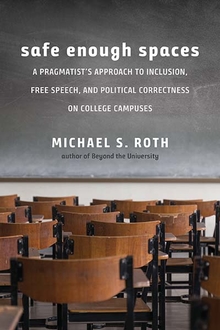By the “safe-enough classroom,” I do not mean that oft-imagined place where frightened teachers and undergrads “walk on eggshells” for fear of saying something that might be offensive to someone else. I have been teaching humanities classes for four decades, and I don’t see eggshells on the floor of my classrooms. Which is not to say things haven’t changed over that period. Many schools are much more concerned today about the student as consumer, and many teachers have been convinced that even if their customers aren’t always right, they never want to hear that they’re wrong. Professors must be encouraged to push back against this creep of the consumerist creed, and they must be supported by university administrators if their institutions are going to offer truly educational experiences, not just cushy ones that earn high marks in student satisfaction.
But aren’t students today oversensitive? Isn’t their demand for trigger warnings and inclusive environments a sign of their desire to substitute comfort for intellectual rigor? As a teacher, I have not found either of these to be the case. And if other teachers do, they should do more than complain about it. If students confuse safety with feeling uncomfortable, they should be challenged in ways that undermine their comfort. One must meet them where they are, but one must not leave them in the same place one found them. Since the 1980s, I have regularly taught a philosophy and film course, and the class has always dealt with disturbing material: genocide, murder, abuse, divorce (also justice, redemption, love). The material, much of which is presented in classic films from the 1930s through the 1950s, can be emotionally wrenching, and over the years I have come to respect that different students handle this intensity differently. I don’t alter the syllabus to make it less upsetting, but I do prepare students for what’s to come because I’ve found that they learn more that way. On the first night of class we watch Night and Fog, a documentary from the 1950s about Nazi extermination camps. Before the film begins, I tell my students, “Tonight we are going to be watching a film dealing with genocide, next week we will watch a film about a murder, and then we go on to a film about child abuse.” Sometimes they laugh a little, sometimes they look concerned. I want them to know what they are in for. I go on to say: “If you find these subjects too upsetting—and they are upsetting—if you find them too disturbing—and they are disturbing—then this is probably not the class for you.” I then say, “If you find these subjects delightful, please get help immediately.” That always gets a laugh.
I provide a break before we start the first film so students can walk out of the auditorium (and withdraw from the course) without being noticed, but almost nobody does. Some students may think of my heads-up about disturbing or provocative material as “trigger warnings,” but I don’t use this term because of its simplistic connotations in regard to trauma and its reactivation. And many years ago when I taught a version of this course, I certainly didn’t use the vocabulary of “safe spaces” to describe the class, though essentially that’s what I wanted then, just as I want it now: for students to feel that they can bring their whole selves to class and be respected when they do so. When this happens, they will often have emotionally intense reactions to the films and the discussions of them. Students come to understand that not all the opinions they bring to class will be affirmed, as well as that ideas will be criticized without disrespecting the people who articulate them. As we saw in Harvard’s report on inclusion and excellence, there will be tensions between flourishing and criticizing. Education happens in that tense space: the safe-enough classroom.
Some classroom situations are more tense than others, of course. When political ideas are enmeshed with identity, for instance. Can one still count on the productive tension between critical thinking and flourishing if a significant segment of a campus community is feeling threatened in its identity by a particular critique? The pedagogical challenge is to help students recognize that they can be critical of ideas without disparaging the people who hold them. Admittedly, this has never been a simple matter; people can be deeply invested in what they say or in what someone else says. Religious students, for example, have long dealt with intellectual challenges raised by secularism that may feel to them like existential threats. A successful classroom is one in which students (and often the teacher) feel they can change their minds and experiment with ideas without having to betray who they are.

Excerpted from Safe Enough Spaces: A Pragmatist’s Approach to Inclusion, Free Speech, and Political Correctness on College Campuses, by Michael S. Roth, new in 2019 from Yale University Press. Published by permission.
Follow us here and subscribe here for all the latest news on how you can keep Thriving.
Stay up to date or catch-up on all our podcasts with Arianna Huffington here.

